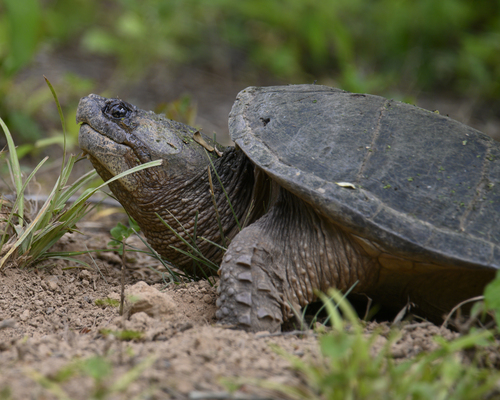
Common Snapping Turtle
The common snapping turtle, Chelydra serpentina, is a North American freshwater dweller, famed for its robust shell, formidable bite, and intimidating disposition. Key to aquatic ecosystems, it curbs overgrowth and balances fish numbers, embodying the wild resilience of its watery domain.
25-30 years
Lifespan
Least Concern
Conservation Status
Stable
Population Trend
Distribution Range of the Common Snapping Turtle
Chelydra serpentina, commonly known as the common snapping turtle, is native to North America. Its geographical distribution extends from southeastern Canada, throughout the eastern United States, and into the northeastern parts of Mexico. The species is prevalent in numerous states across the U.S., particularly along the East Coast and into the Midwest.
Common Snapping Turtle's Habitat
Environmental Conditions
The common snapping turtle commonly inhabits freshwater environments such as ponds, lakes, slow-moving rivers, swamps, and marshes. It thrives in water bodies with soft muddy or sandy bottoms and abundant aquatic vegetation. These environments typically feature temperate climates, although the species is known to adapt to a range of temperatures provided there is suitable aquatic habitat.
Ecological Niche
As a keystone species, Chelydra serpentina plays an important role in its ecosystem by helping to keep fish populations balanced and cleaning up dead animal matter as a scavenger. It is both predator and prey within its food web, preying on fish, amphibians, birds, and small mammals while young turtles are predated upon by birds, mammals, and larger fish.
Copyright @ Nature Style Limited. All Rights Reserved.
 English
English